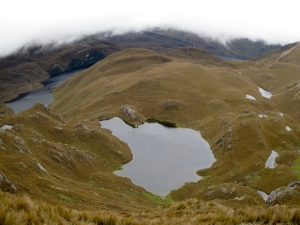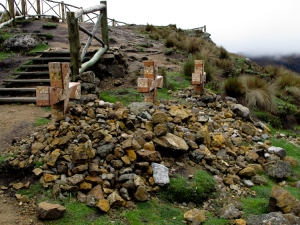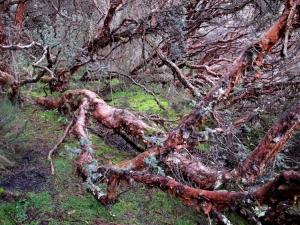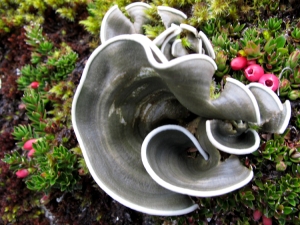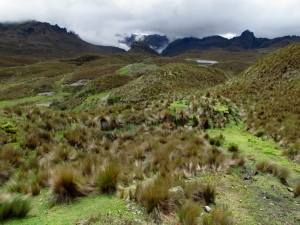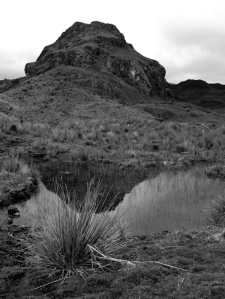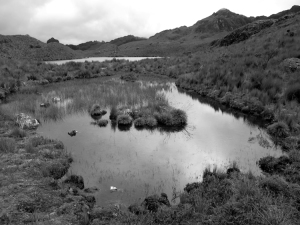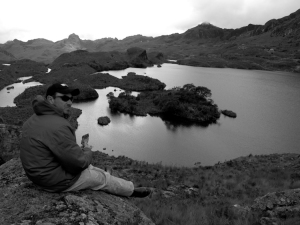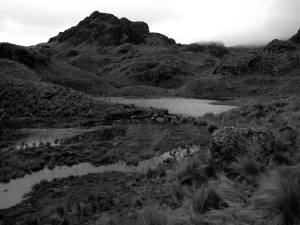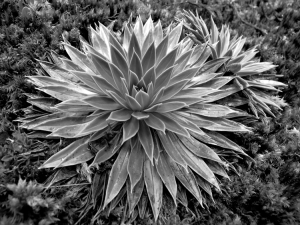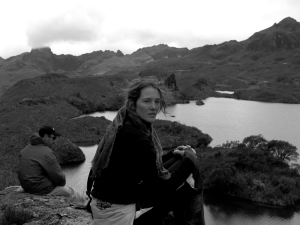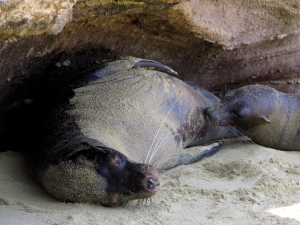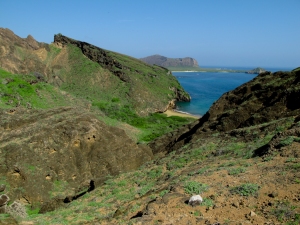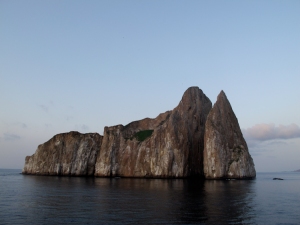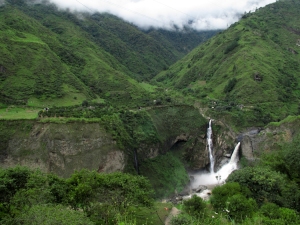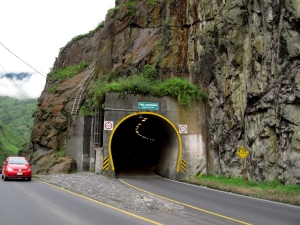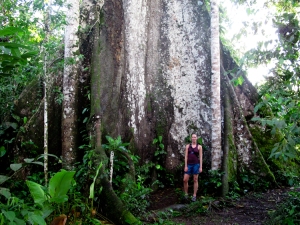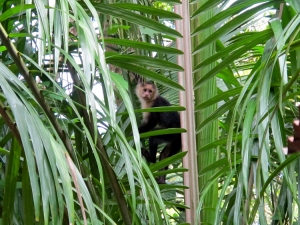Well, we didn’t make it to Cajas National Park yesterday, but we did enjoy a day of doing nothing. We’ve been pretty much on the go ever since we arrived in Ecuador with the 9-day bike trip, Galapagos (where we were kept busy from 7am to 5pm most days), and bus, plane and taxi travel, not to mention walking around the towns and cities we’ve visited along the way. So it was nice to have a day where we did nothing! Actually, I’m pretty incapable of doing nothing all day, so I did walk around a bit and spent some time at a great little cafe called Cafe Austria (fresh juices and apple kuchen!) writing emails and such. For dinner C and I went to Cafe Eucalyptus, which is owned by a British and Romanian couple (Cuenca is chock-full of expats) and it was awesome. The best food I’ve had in awhile! We’ll be back tonight…
But today we did make it to Cajas National Park. We had hired a guide yesterday through Apullaca and he picked us up this morning at 8am with rubber boots and rain jackets. It was 45 minute drive into the park and all along the way the views were stunning. We lucked out with no rain and a high cloud cover, so the visibility was great. Our first stop was at a place called Tres Cruces where there were three crosses almost buried in fist-sized rocks. Apparently the crosses are situated on the Inca trail and each cross represents either the sun, the moon, or the mother earth. As the Incas and other Indians traveled along the trail, they would make an offering at whichever ideology they believed in, placing a stone at the bottom of the cross.
From there we climbed a humbling few hundred feet (made difficult by the 12,000 foot altitude) to the top of a lookout that had great views of lakes and ponds below. In addition to its rugged beauty, Cajas National Park is well-known for its plethora of lakes and ponds, many of which supply Cuenca with fresh, clean water.
We descended down the wooden staircase and got back in the car for a short drive to Toreador Lake where Gustavo, our guide, would lead us into the moorland of Cajas National Park. He gave us the option of doing an easier, flatter route, or to head up into the hills for a longer and more exacting hike. C and I chose the longer more exacting hike, of course. We soon found out the need for rubber boots. The ground in Cajas is saturated with water and much of the ‘trail’ is a mud trap. It reminded me of hiking in Alaska! Interestingly, Gustavo informed us that the water comes from underground springs that keep flowing all year round.
After skirting the edge of Toreador Lake for a bit, we entered a paper tree forest. I felt like I entered the Lord of the Rings! The paper trees are native to Cajas and their bark looks like brown paper peeling off the trunks and limbs. They’re also twisted and gnarly, giving the forest a eerie, yet enchanting feel. It was so green, too, with all the moss, ferns, lichens and ground plants.
I was glad that we had decided on going with a guide because the trail we were following looked like an animal path diverging and converging in ten different directions. Not surprisingly, we were told that it’s not too uncommon for hikers to get lost in the park.
We hiked for three hours up and down the hills, learning interesting facts and tidbits from Gustavo and enjoying the dramatic and breathtaking landscape of Cajas National Park. Both C and I were immensely impressed. Just as we were returning to the trailhead and visitor’s center where we started, the sky darkened and I felt raindrops hitting my cheeks. Just like at Chimborazo, we had impeccable timing! Back in the car the raindrops started to fall more heavily and the park was consumed by low, grey mist.
I took a series of black and white photos that I thought turned out really well:
By that time it was 1pm and I was starving. We stopped at a restaurant/hotel just outside of Cajas called Dos Chorreras – or two waterfalls – because it faces a hillside with two white cascades trickling down. The restaurant normally serves trucha (trout), but had a vegetarian option as well, which was decent (I’ll have to try making yucca fries when I get home!). The adjoining hotel is a beautiful lodge made of wood and stone with several fireplaces and large windows. Unfortunately, it’s about $200 a night 😦 Gustavo said that a lot of honeymooners head there for a getaway.
Then it was back to Cuenca in the late afternoon and after a shower, I returned to Cafe Austria for a beet, carrot, apple, and ginger juice and kept my head turned away from the apple kuchen.
Tomorrow we leave the lovely colonial Cuenca for Guayaquil. C flies out to Baja where he’ll start a new rotation on the Sea Bird and I’ll head south the Vilcabamba and Madre Tierra!
Filed under: Ecuador, Travel | Tagged: Apullacta tour company, Cajas National Park, chimborazo, cuenca, Ecuador, hiking, nature, outdoors, South America, Travel, tres cruces | Leave a comment »


